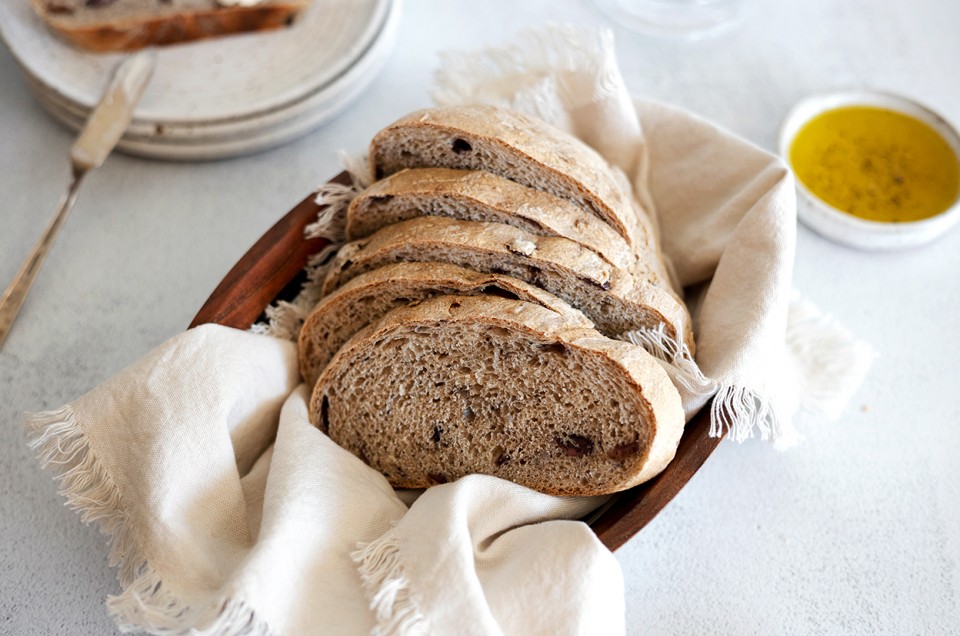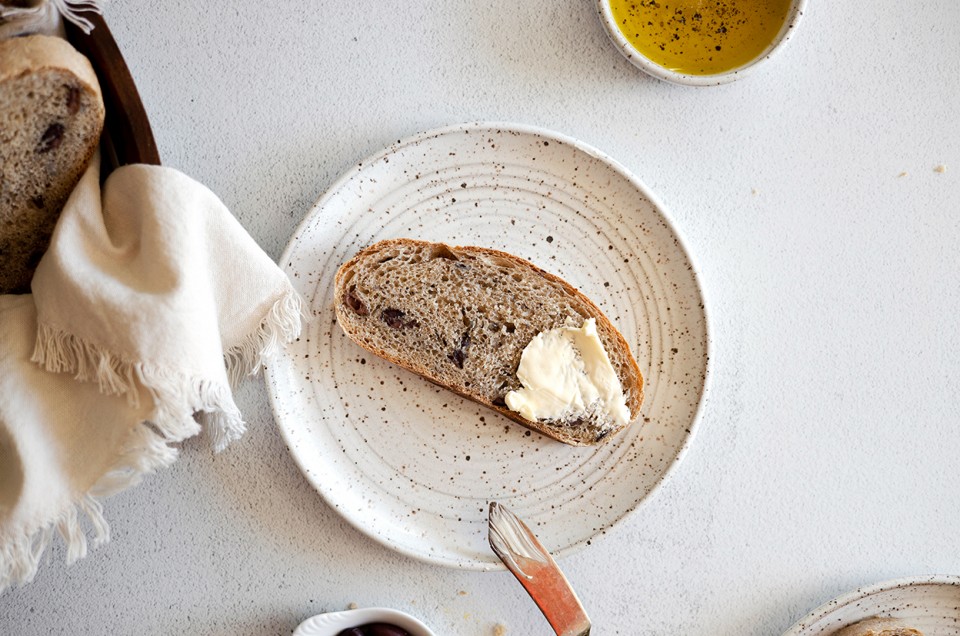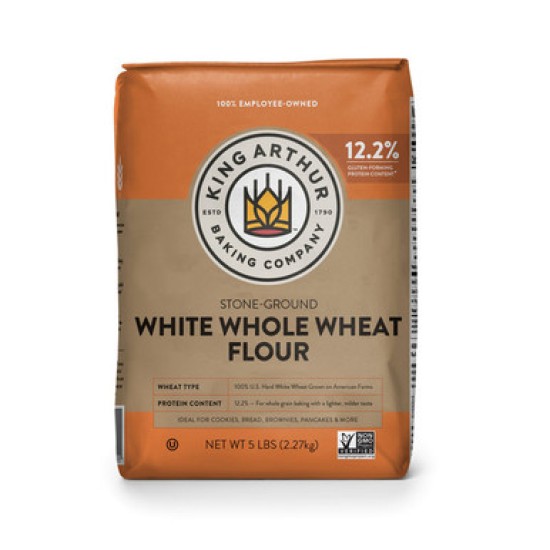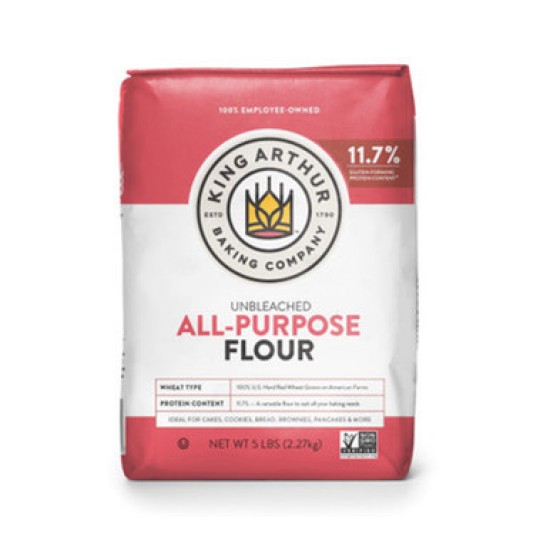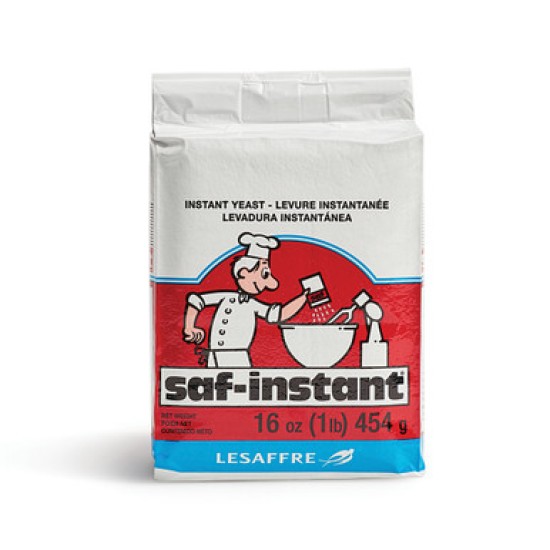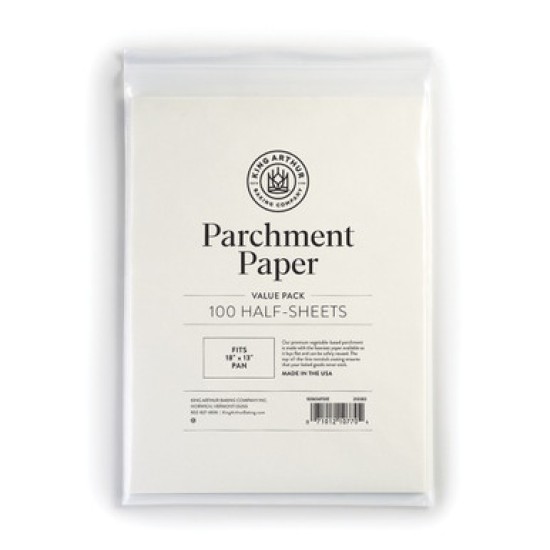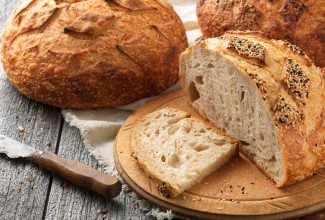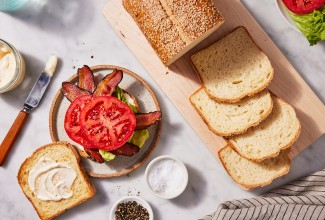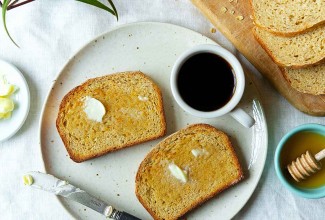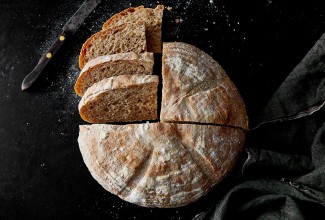-
To make the starter: Weigh your flour; or measure it by gently spooning it into a cup, then sweeping off any excess. Combine the water, flours and yeast in a medium-sized mixing bowl. Stir until fairly smooth, cover, and let the mixture rest at room temperature for 12 to 18 hours.
-
To make the dough: Add the water, flour and salt to the starter, and stir to combine. Knead the dough — by hand, mixer, or bread machine — until it's smooth and supple. It'll be a bit dry and stiff at this point, but once you add the onion and olives and they release their juices it'll become soft.
-
Allow the dough to rest, covered, for about 15 minutes.
-
Knead in the olives and the onion, place the dough in a greased bowl, cover the bowl, and set the dough aside to rise for 1 1/2 hours, or until it's doubled in bulk.
-
Turn the dough out onto a lightly floured work surface.
-
Divide it in half and form each half into a ball or an oval.
-
Place the loaves on a lightly greased or parchment-lined baking sheet, or one that's been dusted with cornmeal.
-
Cover the loaves with lightly greased plastic wrap, or a reusable cover and allow them to rise for 1 hour, or until they're nearly doubled in size. (See "tips," below.)
-
Preheat your oven to 450°F.
-
Just before placing the loaves in the oven, make several slashes across the top of each, and spritz them generously with water.
-
Bake the bread for 20 to 22 minutes, until it's golden brown and the loaves sound hollow when tapped on the bottom, or a digital thermometer inserted into the center registers 200°F.
-
Remove the loaves from the oven, and cool them on a rack.
-
Store bread, well-wrapped, for 5 days at room temperature; freeze for up to 3 months.
